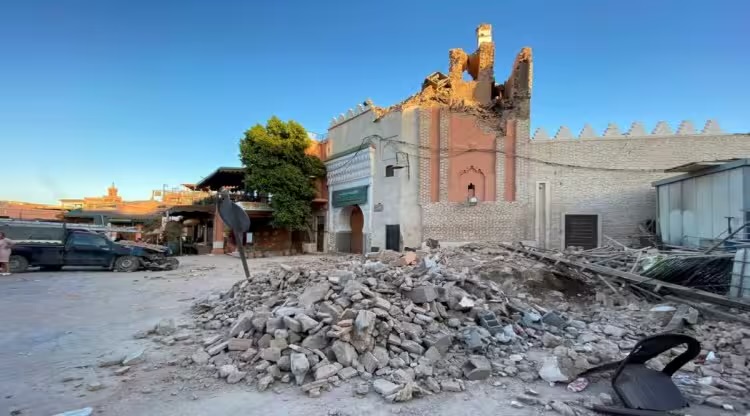Morocco is reeling from the aftermath of a catastrophic earthquake that struck late on Friday night, leaving a trail of devastation in its wake. The death toll has now surged to more than 800, and there are fears that this grim number may continue to climb. The epicenter of this powerful 6.8 magnitude earthquake was situated just 72 kilometers west of Marrakesh, a significant economic and cultural center, causing extensive damage, including to the iconic UNESCO World Heritage site – the red walls that encircle the old city.
Morocco is grappling with an unprecedented tragedy as the death toll from the devastating earthquake continues to soar. The latest figures reveal that more than 800 people have tragically lost their lives, with concerns that this number may increase further. This monumental loss has left the nation in mourning and disbelief.
The earthquake’s initial magnitude, as recorded by the US Geological Survey (USGS), stood at 6.8 when it struck at precisely 11:11 pm. The seismic event unleashed a torrent of shaking that persisted for several seconds, causing widespread destruction. Morocco’s National Seismic Monitoring and Alert Network measured the earthquake at an even higher magnitude, registering it at 7 on the Richter scale, highlighting the severity of the tremors
Epicenter of Morocco Distruction
Marrakesh, a vital economic center for Morocco, bore the brunt of the earthquake, with the epicenter located just 72 kilometers to the west. The city, known for its cultural significance and economic importance, has been severely impacted by the seismic event. The city’s infrastructure, businesses, and livelihoods have been disrupted, adding to the nation’s woes. Marrakesh residents described the terrifying moments when the earthquake struck. Buildings swayed, and the ground trembled beneath them, leaving many in a state of shock and panic. The power outage that followed, lasting for 10 minutes, only exacerbated the situation.
The earthquake’s destructive force extended to the UNESCO World Heritage site that is the hallmark of Marrakech—the iconic red walls surrounding the old city. These walls, symbolizing Morocco’s rich cultural heritage, now bear the scars of the disaster, further emphasizing the extent of the devastation.
Images and videos circulated on social media, showing parts of the red walls in ruins and dust. It’s a sight that has left Moroccans and the world saddened, as they witness the impact on the nation’s historical treasures.

A Widespread Impact
The repercussions of the earthquake extended beyond Morocco’s borders. Reports from the Portuguese Institute for Sea and Atmosphere and Algeria’s Civil Defense agency indicate that the seismic event was felt as far away as Portugal and Algeria. This widespread impact underscores the earthquake’s potency and the need for coordinated international assistance.
In the coastal cities of Rabat, Casablanca, and Essaouira, residents reported feeling the tremors and hearing screams during the quake. In Essaouira, pieces of facades fell, and people sought refuge in squares and cafes, preferring to sleep outside.
Global Response and Assistance
As Morocco grapples with the unprecedented scale of destruction and loss, the world unites in expressing its condolences and offering support. Nations from around the world have extended their sympathies to Morocco and have pledged assistance to aid in the recovery and relief efforts. Prime Minister Narendra Modi, has been among the first to extend a helping hand to earthquake-stricken Morocco. In a heartfelt message, PM Modi expressed grief at the loss of lives and offered all possible assistance. His words underscore the importance of international cooperation and solidarity in times of adversity.
Morocco now faces the daunting task of rebuilding and recovery, and it does so with the hope and determination of a global community standing by its side. The road to healing will be long and challenging, but the spirit of unity and resilience shines brightly in the face of this tragedy.












